I’m no stranger to aches and pains, and when I stumbled across MagniLife Arnica Pain Relief Gel, I was intrigued by its promise of natural relief. With its blend of arnica, eucalyptus, and emu oil, it sounded like a soothing option for my sore muscles and occasional bruises.
Despite some mixed feedback online, I found it worth trying, and I’m glad I did. In this article, I’ll share my experience, break down the pros and cons, compare it to other brands, and offer tips to get the most out of it. Trust me, this gel deserves a spot in your medicine cabinet.
My Experience With Magnilife Arnica Pain Relief Gel
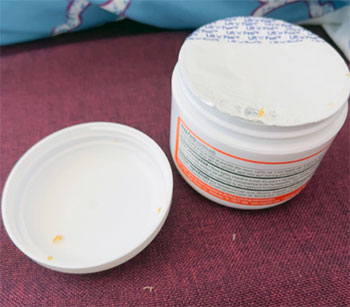
Let me set the scene: I’m in my late thirties, and between chasing my kids, hitting the gym, and occasionally overdoing it with yard work, my body often feels like it’s staging a protest. My knees ache, my shoulders tighten, and sometimes I wake up feeling like I ran a marathon in my sleep.
I’d heard about arnica for years—my mom swore by it for bruises—but I’d never tried it in gel form until MagniLife’s version caught my eye at the pharmacy.
The first time I used it, I was skeptical. I’d just tweaked my lower back lifting a bag of mulch, and the pain was a dull, nagging throb. I scooped out a small amount of the gel—about the size of a dime—and rubbed it into the sore spot.
The texture was smooth, not sticky, and it absorbed quickly without leaving a greasy film. There was a faint eucalyptus scent, but nothing overpowering like some menthol-heavy creams I’ve tried. Within about 15 minutes, I noticed the pain had dulled significantly. It didn’t vanish completely, but it was enough to let me move without wincing.
Over the next few days, I applied it morning and evening, as the instructions suggested. The relief was consistent, though not miraculous. It took the edge off, making it easier to get through my day. I also tried it on a bruise from bumping my shin on the coffee table, and I swear it faded faster than usual.
My husband, who’s a runner, borrowed it for his sore calves and gave it a thumbs-up, saying it felt cooling and calming. That said, I noticed it worked better for acute, localized pain than for chronic issues like my occasional knee stiffness. It’s become a go-to in our house, but I’ll be honest—it’s not a cure-all, and the mixed reviews online gave me pause before I bought it.
Pros Of Magnilife Arnica Pain Relief Gel
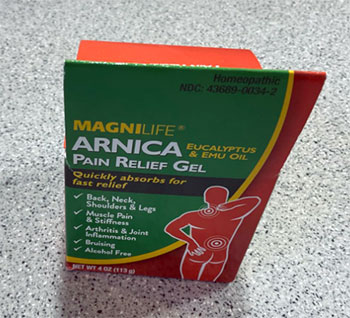
- Quick Absorption and Non-Greasy Feel: One of the first things I noticed was how fast this gel sinks into your skin. Unlike some creams that leave you feeling like you’ve slathered on cooking oil, MagniLife’s formula absorbs in seconds. I could apply it, pull on my jeans, and not worry about staining my clothes or feeling sticky. This is a huge plus if you’re using it on the go or before bed.
- Natural Ingredients That Soothe: I’m a fan of the ingredient list—arnica, eucalyptus, and emu oil sound like something you’d find in a high-end spa, not a drugstore gel. Arnica is known for reducing inflammation and bruising, while eucalyptus adds a cooling effect that feels refreshing. Emu oil, which I’d never tried before, seems to help the gel penetrate deeper, making the relief feel more than skin-deep. It’s also alcohol-free, so it doesn’t dry out your skin.
- No Overpowering Smell: If you’ve ever used a menthol-based cream, you know how it can make your eyes water from across the room. This gel’s eucalyptus scent is subtle and fades quickly. I’ve applied it at work, and no one’s asked if I just walked out of a locker room, which I appreciate.
- Versatile for Minor Aches and Bruises: Whether it’s a sore muscle from overdoing it at the gym or a bruise from my clumsy moments, this gel seems to help. It’s not a heavy-duty painkiller, but for minor injuries or post-exercise stiffness, it’s been a reliable ally. My husband even used it on a sprained ankle, and it helped reduce the swelling enough to keep him comfortable.
- Safe for Regular Use: Since it’s homeopathic and doesn’t interact with medications, I feel comfortable using it daily if needed. The instructions say to stop if symptoms worsen or last longer than seven days, but I haven’t had any issues. It’s a relief to have something I can use without worrying about side effects or drug interactions.
Also read: My Thoughts on Itsuki Kenko Health Patch Reviews.
Cons Of Magnilife Arnica Pain Relief Gel
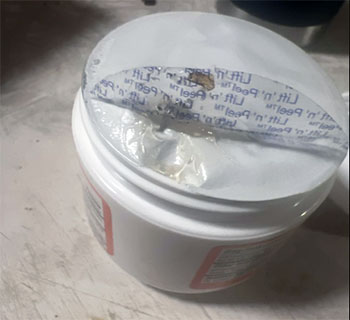
- Limited Effectiveness for Chronic Pain: While it worked great for my acute back pain and bruises, it fell short for my chronic knee stiffness. I have mild osteoarthritis, and after a week of consistent use, I didn’t notice much improvement. If you’re dealing with deep-seated or long-term pain, you might find it underwhelming, like some reviewers did.
- Packaging Issues: Those negative reviews about broken seals and leaky jars? I get it. My first jar arrived fine, but when I ordered a second one online, the seal was slightly cracked. It didn’t affect the product, but it made me question the shipping process. If you’re buying online, double-check the packaging when it arrives.
- Not a Miracle Cure: Let’s be real: this gel isn’t going to make your pain disappear like magic. It takes the edge off, but don’t expect it to replace prescription meds or physical therapy. Some reviewers seemed to expect instant, total relief, and when it didn’t deliver, they were quick to dismiss it. It’s best for mild to moderate issues, not severe conditions.
- Price Can Add Up: At around $15-$20 for a 4-ounce jar, it’s not the cheapest option out there. If you’re using it multiple times a day, you’ll go through it faster than you’d like. I wish they offered a larger size or a subscription discount to make it more budget-friendly.
Tips For Using Magnilife Arnica Pain Relief Gel
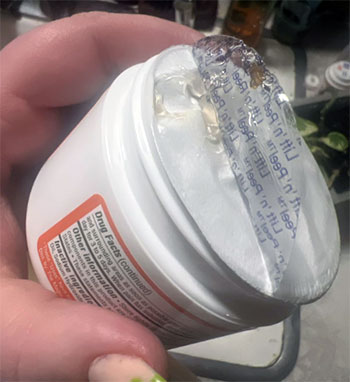
- Apply It Right for Best Results: To get the most out of this gel, follow the instructions closely. Apply a thin layer to the affected area as soon as you feel pain or notice a bruise forming. Rub it in gently, then reapply after 30 seconds. I found that doing this four times a day for the first few days worked best for acute pain. After that, I scaled back to morning and evening applications. Don’t slather on too much—less is more, and it prevents that sticky feeling.
- Store It Properly: Keep the jar in a cool, dry place, like your bathroom cabinet or bedside table. I made the mistake of leaving mine in a hot car once, and the gel got a bit runny. It still worked, but the texture wasn’t as pleasant. Also, make sure the lid is screwed on tightly to avoid leaks or contamination.
- Clean Your Hands After Use: This might sound obvious, but wash your hands after applying the gel, especially if you’re using your fingers to rub it in. I accidentally touched my eyes once after application, and the eucalyptus gave me a mild sting. If you’re like one reviewer who wanted a tube or roll-on, you can use a clean spatula to scoop it out and avoid getting it on your hands.
- Pair It with Other Remedies: For better results, combine the gel with other pain-relief strategies. I found that using it after a warm shower or with a heating pad amplified the soothing effect. For bruises, applying it right after the injury and then icing the area helped reduce discoloration faster. If your pain is chronic, talk to your doctor about complementary treatments like stretching or physical therapy.
- Check the Seal When Buying: Given the complaints about broken seals, inspect the jar when it arrives. If the seal is damaged or the gel looks off (like it’s separated or discolored), contact the retailer for a replacement. I’ve had good luck buying from CVS in-store, but online orders seem to be hit-or-miss.
Comparison With Other Brands
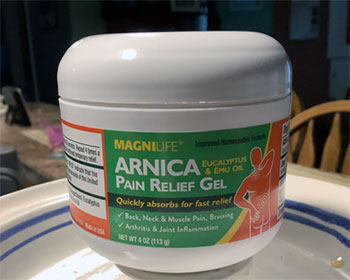
- Boiron Arnicare Gel: Boiron’s Arnicare Gel is probably the most well-known arnica product out there, and I’ve used it a few times before trying MagniLife. It’s similar in that it’s homeopathic and focuses on arnica as the main ingredient, but it lacks the eucalyptus and emu oil that give MagniLife its extra soothing kick. Boiron’s gel is fragrance-free, which is great if you’re sensitive to smells, but I found it less effective for muscle pain. It’s also a bit pricier for a smaller tube, which makes MagniLife feel like a better value. That said, Boiron has a stronger reputation for consistency, and I’ve never heard complaints about packaging issues.
- Voltaren Gel: Voltaren is a different beast altogether—it’s a topical NSAID with diclofenac, not a homeopathic remedy. I tried it for my knee pain at my doctor’s recommendation, and it was more effective for chronic joint issues than MagniLife. However, it’s prescription-strength in some cases, and you have to monitor your NSAID use to avoid side effects like stomach issues. MagniLife is safer for daily use and doesn’t carry those risks, but it can’t match Voltaren’s power for severe pain. Voltaren also has a medicinal smell that lingers, which I didn’t love.
- T-Relief Arnica +12 Cream: T-Relief’s Arnica +12 Cream is another homeopathic option I’ve tested. It combines arnica with other plant-based ingredients, like calendula and echinacea, for a broader approach to pain relief. I found it comparable to MagniLife for bruises and minor aches, but it’s thicker and takes longer to absorb. The scent is herbal and pleasant, but it’s stronger than MagniLife’s subtle eucalyptus. T-Relief is a bit cheaper, but the jar is smaller, so it evens out. I’d say MagniLife edges it out for ease of use and faster absorption.
- Sanar Naturals Arnica Roll-On: Sanar Naturals offers an arnica roll-on, which I tried after reading that reviewer who wished MagniLife came in a tube. The roll-on is convenient for mess-free application, and it includes menthol for a cooling effect. It worked decently for post-workout soreness, but I didn’t notice much help with bruising. The menthol smell was too strong for my taste, and it felt less luxurious than MagniLife’s emu oil formula. The roll-on format is a win for portability, but the smaller size means you’ll need to repurchase more often.
Read More: My Thoughts on Donama Cervical Pillow Reviews.
Frequently Asked Questions (FAQ)
Arnica gel, including MagniLife’s version, can work for many people, but it’s not a one-size-fits-all solution. In my experience, it’s effective for mild to moderate muscle pain, bruises, and swelling from minor injuries. The arnica in the gel is thought to reduce inflammation and prevent bruising by stopping capillaries from leaking. Some users, like me, feel relief within minutes, while others need a few days of consistent use. However, for chronic conditions like arthritis, it may not be strong enough, as I found with my knee pain. Scientific evidence on homeopathy is mixed, so results vary.
While MagniLife’s gel isn’t Arnicare, they’re both arnica-based, so side effects are similar. I haven’t experienced any issues, but some users report mild skin irritation, especially if they have sensitive skin. If you apply too much or get it near your eyes or mouth, it can sting. Rarely, people with allergies to arnica or related plants (like ragweed) might get a rash. One WebMD user mentioned nausea and vertigo after using arnica, but that’s likely from ingesting it, not topical use. Always stop if symptoms worsen or last over a week.
It depends on your needs. MagniLife’s arnica gel is great for minor aches, bruises, and natural relief without drug interactions. I found it gentler and safer for daily use. Voltaren, with its NSAID ingredient, is stronger for chronic joint pain, like my osteoarthritis, but it requires monitoring to avoid side effects. Arnica is homeopathic and won’t interfere with meds, while Voltaren feels more medicinal and has a lingering smell. For mild issues, I’d pick MagniLife; for severe pain, Voltaren wins, but talk to your doctor first.
MagniLife’s topical arnica gel is unlikely to interact with medications since it’s applied to the skin, not ingested. I’ve used it while taking ibuprofen and had no issues. However, if you’re on blood thinners or have a bleeding disorder, check with your doctor, as arnica might affect clotting in rare cases. Oral arnica is riskier and should be avoided with certain drugs, but for topical use, it’s generally safe. Always read the label and consult a healthcare provider if you’re unsure.
Final Thoughts
After weeks of using MagniLife Arnica Pain Relief Gel, I’m convinced it’s a solid choice for anyone dealing with minor aches or bruises. It’s not perfect, and the mixed reviews online reflect that, but its quick absorption, natural ingredients, and subtle scent make it a standout. Whether you’re sore from a workout or nursing a clumsy bump, this gel can help. Grab a jar, give it a shot, and see how it fits into your pain-relief routine—you might be as pleasantly surprised as I was.
